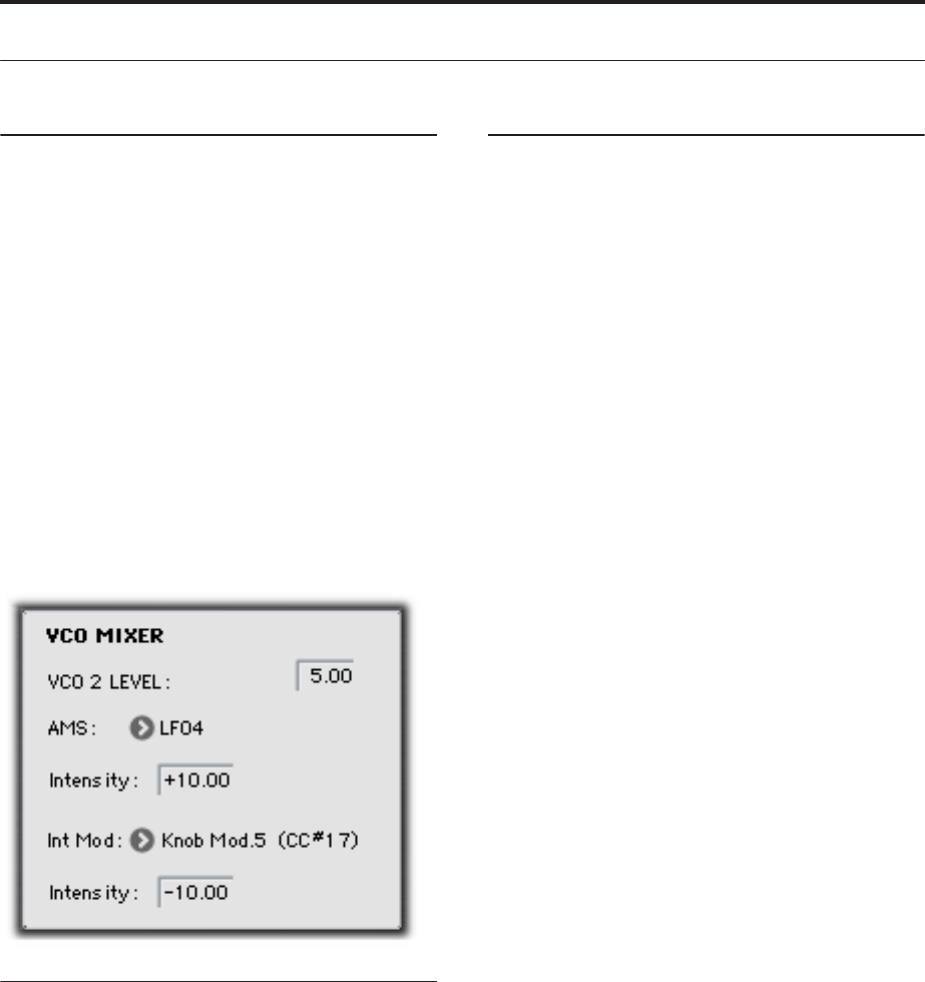
EXi: MS-20EX
282
On-screen knobs and switches, and the Parameter Details area
Parameter Details
The LCD displays include graphic knobs for all of the
main MS-20EX parameters. These let you view and
edit parameters quickly and easily.
You can program any original MS-20 sound using only
these knobs. If you want more flexibility and control,
however, the MS-20EX offers four additional EGs and
LFOs, four AMS mixers, access to the EXi Program’s
Common LFO, Common Step Sequencer, and Vector
features, and AMS modulation for almost every
original MS-20 parameter.
The entryway to these advanced features is the
Parameter Details area, located in the lower right-hand
part of the screen. This shows information for the
selected knob or switch, including its parameter group
and parameter name, its exact value, and its AMS
assignments:
Parameter Details area
Using the graphic parameters
Editing knobs
To edit knobs:
1. Touch the knob.
A yellow square will appear around the knob, showing
that it has been selected. The Parameter Details area
will change to show the name and value of the current
parameter, along with other related information.
2. Use any of the data-entry controls to edit the value.
You can use the value slider, the inc/dec buttons, the
rotary dial, or the numeric keypad.
As you edit the value, notice that the graphic knob
moves, and that the value in the Parameter Details area
changes as well.
Editing on/off switches
To edit an on/off switch, such as the MG KEY SYNC
button, simply:
1. Touch the switch to toggle the value.
Assigning AMS modulation
Most parameters support modulation via AMS.
Sources and intensities can be edited in the Parameter
Details area:
1. Touch the knob.
If the parameter supports AMS modulation, the
Parameter Details area will show one or more AMS
sources and intensities.
2. Edit the AMS settings in the Parameter Details
area.
Note: the graphic knobs always show their stored
value. Absolute Tone Adjust settings edit these values,
just as if you were editing the parameters themselves,
and so the graphics will show the results. However,
AMS modulation does not edit the stored value, and so
the graphics do not include the results of AMS.
Note also that AMS can sometimes modulate
parameters outside the range of the stored values, as if
you were pushing the parameter beyond the ends of
the knob.


















